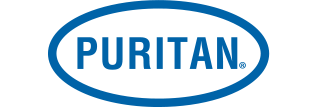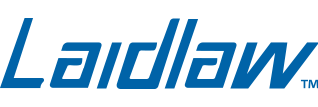
PROCESSES AND PRODUCTS FOR FIGHTING AGAINST COVID-19
In the midst of the current global crisis related to the spread of new corona virus SARS-CoV-2, which causes COVID-19 disease, Street’s remains highly committed to fighting the spread of the virus and RESTORING CONFIDENCE IN CLEAN™. Information and recommendations in relation to the virus continue to change and be updated. So, above all else, we recommend regularly visiting the US Centers for Disease Control (CDC) website for the latest updates and information at Coronavirus.gov .
While there are no studies yet on this specific virus as it relates to the professional cleaning industry or to any individual cleaning products, the World Health Organization (WHO), the CDC in consultation with the EPA, and our industry’s trade groups have made recommendations based on studies of other coronaviruses and with experiences of what has been effective for past flu epidemics and other pandemics.
According to the CDC’s Interim Recommendations for Cleaning and Disinfecting, it is generally a two part process. Part one is cleaning to remove germs, dirt, and impurities and part 2 is disinfecting or killing the germs. While there are many Street’s products to help ensure optimum cleaning and the removal of SARSCoV-2, and other germs and contaminants from fabrics and surfaces, we wanted to provide you specific information regarding our EPA registered products and on recommended cleaning and handling procedures that are more specifically related to attacking SARS-CoV-2 and preventing it’s spread.
Street’s currently has two EPA registered products available for laundry operations and one EPA registered product available for housekeeping. Attached are product information sheets for each of these products. However, it is important to re-emphasize that proper total cleaning and handling processes in the drycleaning and laundry environment are essential, with or without these products, to achieve optimum cleaning to effectively remove bacteria and viruses from fabric and hard surfaces.
FLEX® LEMO-PURE™ Lemon Scented Disinfectant Cleaner
According to CDC’s “Interim Recommendations for US Households with Suspected/Confirmed Coronavirus Disease 2019” for “How to clean and disinfect”, “most common EPA-registered household disinfectants should be effective.” Flex Lemo-Pure is an EPA registered, hospital-grade, surface cleaner, disinfectant, deodorizer, fungicide, and virucide. This product is a phosphate free formulation designed to provide effective cleaning, deodorizing, and disinfection specifically for hospitals, nursing homes, schools, and other institutions where housekeeping is of prime importance in controlling the hazard of cross-contamination. This product, when used as directed, is formulated to disinfect inanimate hard nonporous surfaces such as walls, floors, sink tops, toilet bowls, tables, chairs, telephones, and bed frames. For larger areas such as operating rooms, patient care facilities and restrooms, this product is designed to provide both general cleaning and disinfecting.
In addition to being effective against numerous bacteria and fungi, Flex Lemo-Pure, when used on environmental, inanimate, hard, non-porous surfaces, exhibits effective virucidal activity against Influenza A2/Japan (representative of the common flu virus), Herpes Simplex Type 1 (causative agent of fever blisters), Adenovirus Type 2 (causative agent of upper respiratory infections), Vaccinia virus (representative of the Pox virus group), Human Immunodeficiency Virus Type 1 (HIV-1), and Hepatitis B Virus (HBV). It kills Pandemic 2009 H1N1 Influenza A virus (formerly called Swine Flu). Lemo-Pure contains active ingredients on EPA’s List N: Disinfectants for Use Against SARS-CoV-2.
Click here for product information.
FLEX SANITIZING FABRIC SOFTENER™ Residual Bacteriostat & Self-Sanitizer
Flex Sanitizing Fabric Softener for laundry is an EPA registered liquid concentrated quaternary fabric softener that acts as a residual bacteriostat and self-sanitizer formulated specifically for hospitals, nursing homes, schools, and other institutions where sanitization is of prime importance in controlling the hazard of cross contamination. While not listed as a virucide, Flex Sanitizing Fabric Softener contains active ingredients on EPA’s List N: Disinfectants for Use Against SARS-CoV-2. Inhibition of bacterial cross-contamination will be continuing to be a high priority for health facilities and others during this pandemic.
Click here for product information.
FLEX BACSTOP™ Residual Self-Sanitizing Bacteriostatic Finish
Flex BacStop is an EPA registered laundry textile sanitizer with self-sanitizing, residual anti-microbial activity. When used in the final rinse, BacStop leaves behind a finish that is both self-sanitizing and bacteriostatic. It continues to eliminate more than 99.9% of infectious bacteria that is acquired in use. It has long been known that the use of an EPA Registered textile sanitizer with residual, self-sanitizing capabilities will create a ZONE OF INHIBITION on the surface of the fabric. Using a product like this, in addition to good and hygienic laundering practices, will ensure that you are not only getting clean textiles out of the dryer but that you are significantly reducing the incidence of bacterial cross-contamination for patients, visitors and employees during the use cycle of these textiles. While not a virucide, inhibition of bacterial cross-contamination will be continuing to be a high priority for health facilities and others during this pandemic.
For laundry processes, Street’s also offers Flex Chlorine Bleach. Bleach is recommended as a disinfectant by CDC as an integral part of laundry processes.
Click here for product information.
In General: Use of Soap and Detergents
Among CDC’s “Take steps to protect yourself” against the virus, it cites washing hands often with soap and water for at least 20 seconds. The New York Times recently explained “People typically think of soap as gentle and soothing, but from the perspective of microorganisms, it is often extremely destructive. A drop of ordinary soap diluted in water is sufficient to rupture and kill many types of bacteria and viruses, including the new coronavirus that is currently circling the globe”. It is worth remembering that, while no studies of the current virus have been made of the use of drycleaning or laundry soaps on the virus, the basic mechanisms that soaps provide in hand washing can apply to many drycleaning and laundry detergents as well. (See drycleaning below.)
Drycleaning Process Information
See the attached “Recommended Garment Handling Protocols” from the Neighborhood Cleaners Association. (NCA) which covers NCA’s recommendations on the virus as it relates to drycleaning.
According to NCA: “The CDC reports regarding textiles states that soap will disrupt / kill the virus by disrupting the lipid. It is reasonable that our processes charged with soap will eliminate virus concerns, as well”.
See the attached “Coronavirus-COVID-19 Guidance – March 13, 2020” from the Drycleaning and Laundry Institute (DLI) which covers DLI’s recommendations on the virus as it relates to drycleaning.
According to DLI: “The CDC advises that the drycleaning process, which includes cleaning and pressing, is effective on most viruses”. The emphasis here is on the total process including use of drycleaning detergents, and industry best practices of recommended cleaning cycle lengths, distillation rates, and drying times and recommend use of the steam heat from pressing as an important step in the overall process. Please visit DLI’s website for updates.
Laundry Process Information
In addition to the DLI document, see the attached “Employer What-to-Know-and-Do” and “Employee Whatto-Know-and-Do” documents provided by the Textile Rental Services Association (TRSA). These are also available in Spanish. Please visit: https://www.trsa.org/resources/covid-19-guidance/ for updates. TSRA quotes the World Health Organization (WHO) guide to controlling epidemic- and pandemic-prone acute respiratory infections:
Wash and dry linen according to routine standards and procedures of the (healthcare) facility. For hotwater laundry cycles, wash with detergent or disinfectant in water at 70°C (160°F) for at least 25 minutes. If low-temperature (i.e. < 70°C; < 160°F) laundry cycles are used, choose a chemical that is suitable for low-temperature washing when used at the proper concentration.
Please remember: a hot water cycle ≥160 °F is recommended by CDC for killing organisms in laundry, while low temperature cycles just remove organisms. The former assures a higher level of sanitation.
Street’s local representatives and technical service department personnel are available to address questions and help ensure the correct processes and products are in place both in drycleaning and laundry operations to help ensure the most optimum cleaning environment possible.
Please contact 1-800-4STREETS, or 630-416-4244 to reach a representative who can assist you, or to refer you to your local Street’s representative. You can also contact us through email (techsupport@4streets.com) and our website (https://4streets.com/contact/).
We will continue to do all we can to offer products and knowledge to aid in fighting the spread of this virus and preserve the health and wellbeing of consumer and our customers.










